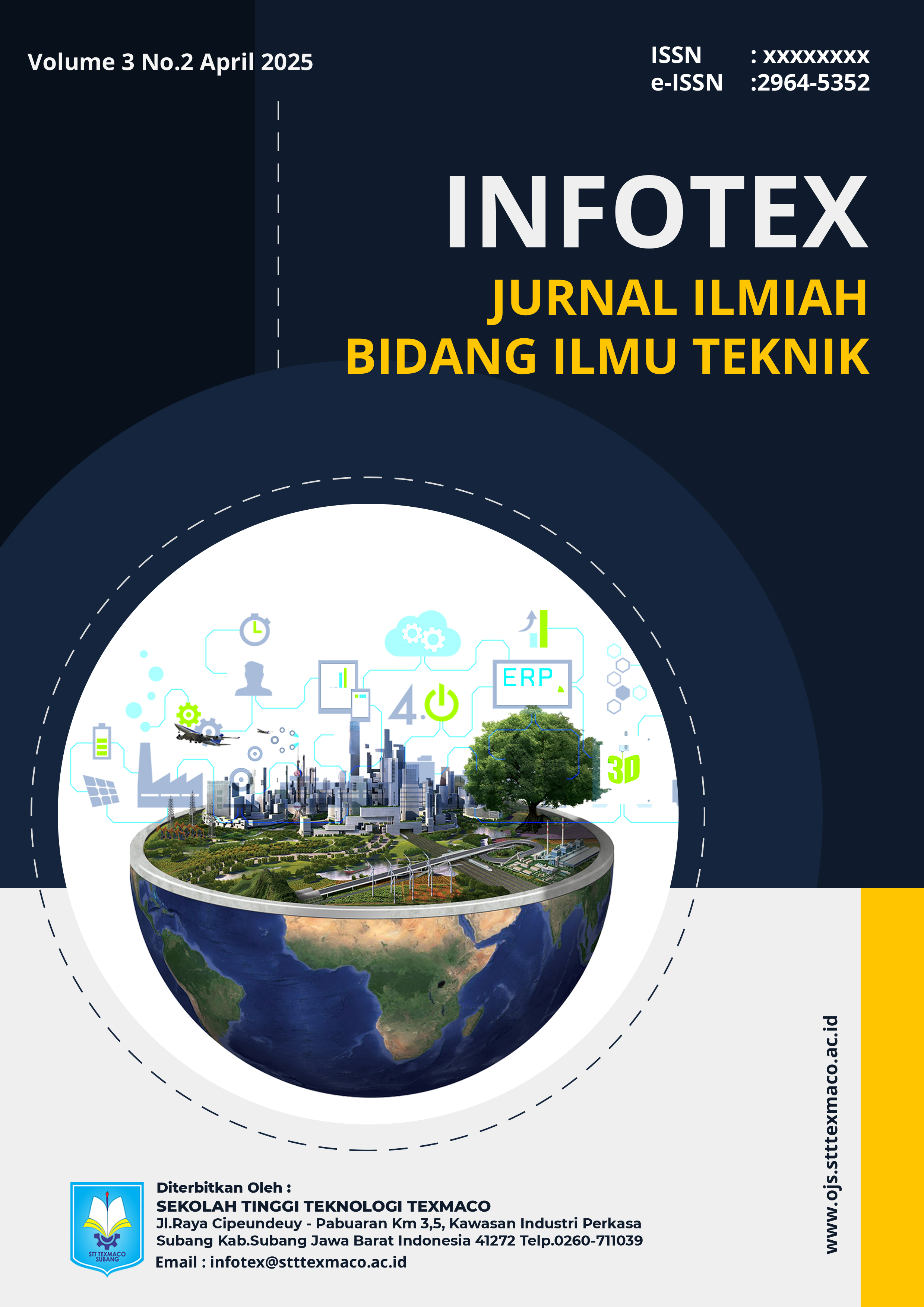Rancang Bangun Alat Jemur Kerupuk dengan Mikrokontroler Berbasis IoT
Keywords:
NodeMCU ESP8266, sensor ldr, sensor dht 11, internet of things, Telegram botAbstract
NodeMCU ESP8266-based automatic clothesline system using dht 11 and ldr sensors is designed to optimize the drying process with automatic control. The system is also equipped with a telegram-based notification to provide real time information to users with time, temperature, and light intensity parameters. The test results show that the system is able to move the drying rack automatically based on the condition that the drying rack will automatically exit when the temperature is >30°C and the LDR value is <100 (bright light) at 08:00, and the drying rack enters when the temperature is <30°C or the LDR value is >100 (dim light) at 16:00. In addition, the system is able to detect rainy conditions with temperature parameters <30°C and LDR value <100 between 08:00 and 16:00, although these conditions did not occur during the test. The limit switch is used to ensure the movement of the clothes rack to stop at a predetermined position, and the motor response test shows that the motor does not stop immediately when the limit switch is active due to the delay of network quality influence, but still in accordance with the system logic.
References
[1] R. Suandi, “Penjemur Kerupuk Otomatis Menggunakan Sistem Kecerdasan Buatan Arduino Uno Dengan Menerapkan Metode Fuzzy Logic Controller (FLC),” JURIKOM (Jurnal Riset Komputer), vol. 7, no. 2, 2020, doi: 10.30865/jurikom.v7i2.2099.
[2] A. Dhanial, A. A. Nugroho, and M. Rifan, “Prototipe Sistem Kendali Otomatis Atap Jemuran Berbasis Internet of Things,” Autocracy: Jurnal Otomasi, Kendali, dan Aplikasi Industri, vol. 7, no. 1, 2021, doi: 10.21009/autocracy.071.1.
[3] I. K. Wijayanti, Nurchim, and J. Maulindar, “PERANCANGAN SMART HOME JEMURAN OTOMATIS BERBASIS INTERNET OF THINGS,” INFOTECH journal, vol. 9, no. 1, 2023, doi: 10.31949/infotech.v9i1.5344.
[4] A. Satriadi, Wahyudi, and Y. Christiyono, “Perangcangan Home Automation Berbasis NodeMCU,” Transient, vol. 8, no. 1, 2019.
[5] S. Hadi, R. P. M. D. Labib, and P. D. Widayaka, “Perbandingan Akurasi Pengukuran Sensor LM35 dan Sensor DHT 11 untuk Monitoring Suhu Berbasis Internet of Things,” STRING (Satuan Tulisan Riset dan Inovasi Teknologi), vol. 6, no. 3, 2022, doi: 10.30998/string.v6i3.11534.
[6] E. A. Prastyo, “Motor Driver Motor L298N,” edukasielektronika.
[7] M. Z. Sasongko and S. Sucipto, “Desain Prototype IoT Menggunakan Bot Telegram Berbasis Text Recognition,” RESEARCH : Journal of Computer, Information System & Technology Management, vol. 4, no. 1, 2021, doi: 10.25273/research.v4i1.7420.
[8] S. Pradana, “Rtc Ds3231,” 2019, vol. 12, no. 2, 2018
Downloads
Published
How to Cite
Issue
Section
License
Copyright (c) 2025 Budi Sunarto, Achmad Anwari, Hanisa Azizah Lutfiah

This work is licensed under a Creative Commons Attribution-ShareAlike 4.0 International License.






